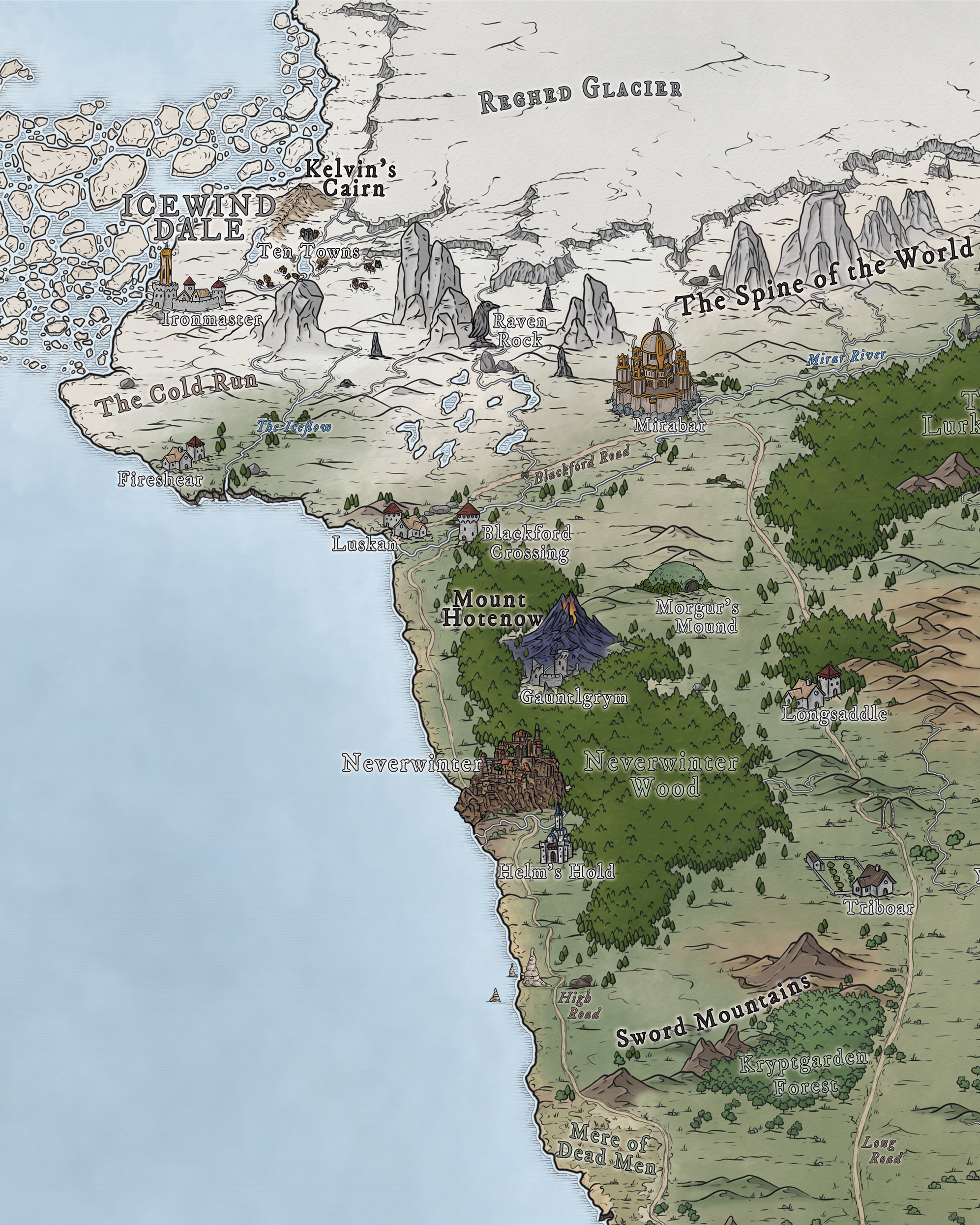Review DUNGEONS & DRAGONS: WIZARDS AND WARLORDS OF WOKELAND
There are several draconian edicts to which all modern Hollywood productions must bow the kneel in servile homage:
- First, all romance is mixed race. No white male and white female suffer mutual attraction.
- Second, no female needs rescue, nor aid, nor advice. She may not gain through grit, learn lessons, make mistakes, or rally after failure. Perfect creatures need no improvement, make no mistakes, and never fail. Hence she can have no character growth, hence no character at all. Women cannot be women, and certainly not modest, feminine, nor maidenly nor maternal. She is never sexy.
- Third, no male can be portrayed displaying leadership, combative spirit, boldness. He can neither protect the weak nor inspire the faint. Men cannot be men.
I am very sad to say that DUNGEONS AND DRAGONS: HONOR AMONG THEIVES (2023) adheres to all these precepts precisely. Despite this, the film portrays a rollicking tale of sword and sorcery adventure, replete with action, danger, thrills & spills, sprinkled with wry jokes and good cheer.
Had it been written without the wokeness, this film would be a favorite of mine. But it was written with, so it is not.
Which puts me in the paradox of being unable either to recommend nor not to recommend this film.
You, dear reader, might not even see or notice the wokeness and so you will have a perfectly fine time. I do not wish to cheat you of your joy by warning you not to see it. On the other hand, if, as I am, you are allergic to wokeness, I do not wish to cheat you of payday money better spent on beer by urging you to go see it.
So I will say both yes and no.
The parts that were good were very good, and ticket buyers should reward Hollywood for doing its job in a fashion that was well above average. But the parts that were bad were politically correct, which I find not just unworkmanlike but vile and anti-human. And by vile, I mean evil. I find anti-whitism annoying, but I find anti-marriage abhorrent.
So, in short, the film was worth seeing, and do not regret the pittance I paid to watch it via a streaming service, but the political correctness prevented a satisfying ending.
Spoilers beyond this point.
*** *** ***
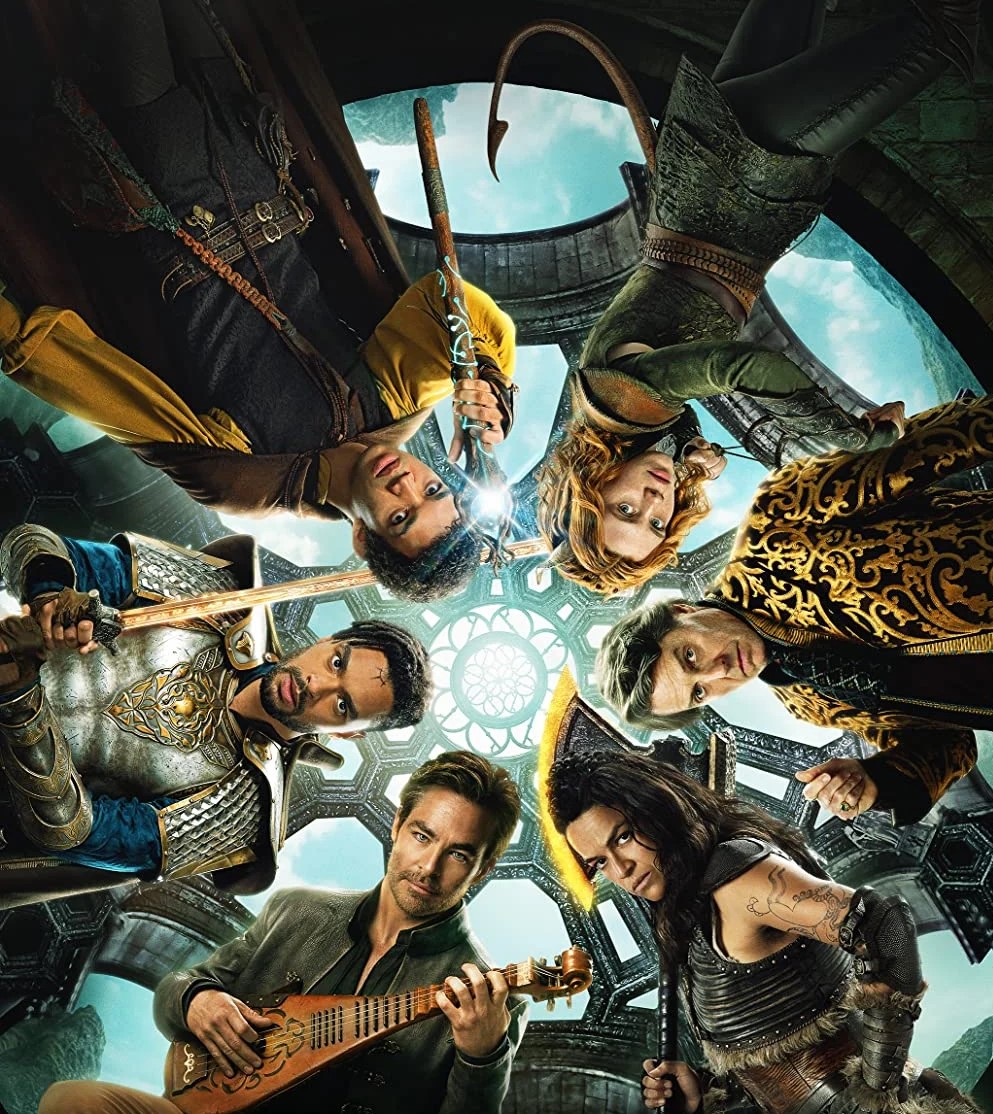
This is sword-and-sorcery action-comedy heist film, set in the Forgotten Realms setting of the Dungeon and Dragons role-playing game franchise. It stars Chris Pine, Hugh Grant, and NPCs. I omit the names of the other actors and actresses, because their acting was not particularly memorable.
The film was directed by Jonathan Goldstein and John Francis Daley, who co-wrote the screenplay with Michael Gilio from a story he co-wrote with Chris McKay. I mention the writers by name particularly, because the writing was particularly memorable.
Thankfully, it has no connection with any films based on D&D made previously. One is reminded of a similar parallel between the MARIO BROS movie and its modern remake: after decades, a masterpiece follows in the footsteps of an embarrassingly bad prior flop.
The story is well paced, well plotted, and well told, introducing its ensemble caste in due order, each given a scene to show his merits, powers and talents, character quirks. The backstory of the prologue is cleverly embedded in flashbacks told by a prisoner to his parole board, as he pleads for his freedom in ironic pathos; this conceit is repeated as the epilogue.
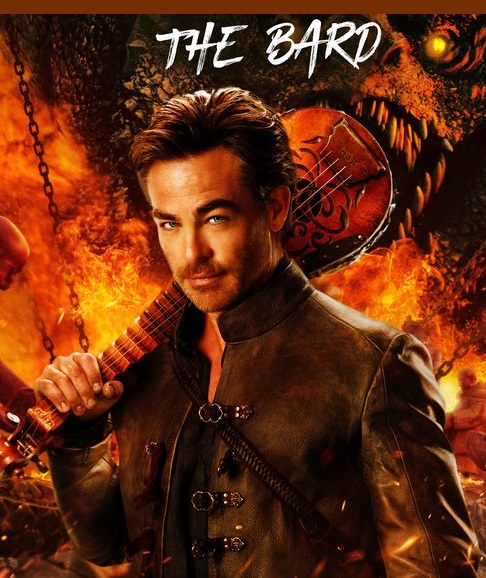
The hero is a charming harper and a rogue named Edgin, once a member of a secret society avowed to opposing tyranny, now a widower, estranged from his daughter, chained in a seemingly inescapable jail tower in the arctic. He was on a heist to steal a magic tablet able to resurrect his wife from the dead, but was betrayed, arrested, and landed in jail.
He shares a cell with a barbarian ax-wench, whose name I forget. She is a glum, unsightly and tattooed lump who lacks the curves of Red Sonja and lacks the charm of Xena Warrior-Princess, but has the strength and brawn of Arnold Schwarzenegger’s Conan. She is both the harper’s team-mate and the nanny of his daughter, but they live as brother and sister. During the two years of sharing a cell with no privacy, neither loneliness nor lust drove the co-ed cellmates to be mates.
In the first scene, we see She-Conan the Barbarianess beat a beefy fellow prisoner to a pulp easily without bruise or wound, without breaking a sweat, in a fashion that was both unbelievable and stupid. The scene is played for laughs, with no real sense of menace, because the beefy fellow, a lizard man just released from bonds more fast than those of Hannibal Lector, is a masher, tongue lolling with lust.
If, dear reader, you can somehow convince yourself that unarmed women can defeat linebackers muscled like bulls, armed cap-a-pied in forty pounds of plate and mail, by dozens and half-dozens, you will enjoy these scenes without a guffaw or groan. I could not.
In one recurring schtick, She-Conan throws potatoes hard enough to kayo soldiers in helmet by doinking them in the noggin. It was kind of cute, but kind of stupid, particularly in any scene where throwing a rock would have been more effective a projectile.
In the rulebook for this game, the strength penalty for playing a member of the fair sex was removed after the early additions, and barbarians have strength bonuses for going berserk, so perhaps magic from some sort of war-goddess or Valkyrie could be involved. But, in a visual medium, dolls decking guys looks gross, and impressionable girl-children should not be exposed to this hypermasculine hence filthy portrayal of their sex.
But, for the sake of the story, let us suppose that in this imaginary alternate world, barbarianesses are thrice as strong as decadent civilized soldiers. For some reason.
To add insult to injury, nothing of the absurdity of housing female prisoners with male is mentioned, nor why the hero does not rise to defend his cellmate when she is menaced by a masher. Instead, and I kid you not, he is knitting a mitten. All female roles in this film are played by men, and all male roles by women.
This offensive opening scene segues into an exciting, well-written, funny, and action-packed scene without pause. And this is not the first nor last time your humbler filmgoer was whiplashed from Wokeland to Elfand and back again.
The two cellmates manage a cunning escape, and this is not the first nor last bit of writing clever enough to win full applause from me. It does involve flinging potatoes as deadly melee weapons able to fell soldiers in full armor in one blow, so please be prepared to strain your suspension of disbelief to the utmost.
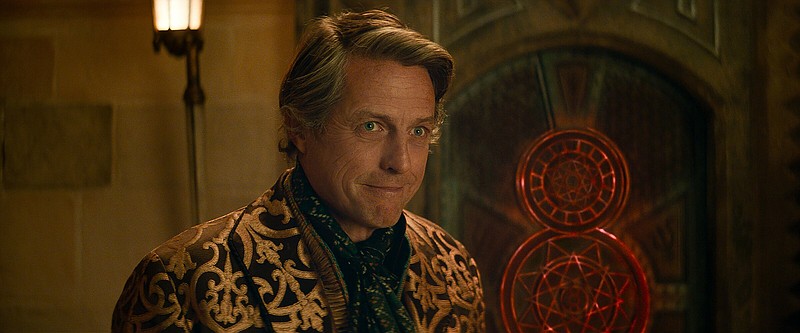
Ed the Harper and She-Conan now go to retrieve the daughter, who is in the hands of their old partner, a con-man named Forge, who retains not only the little girl but the tablet, and has somehow become lord of the city of Neverwinter, which is about to announce a gladiatorial game involving (of course) mazes and monsters. The wealth of high-stakes gamblers from lords and dignitaries gathered for the games is being kept in a magically sealed vault, along with the tablet.
However, Forge is not all he seems, having made an alliance with a bald necromanceress, also tattooed, and he has spent the last few years poisoning the daughter’s mind against Ed the Harper — for now the young girl believes he abandoned her for a life of crime, rather than his real goal, which was to resurrect her mother and restore the family.
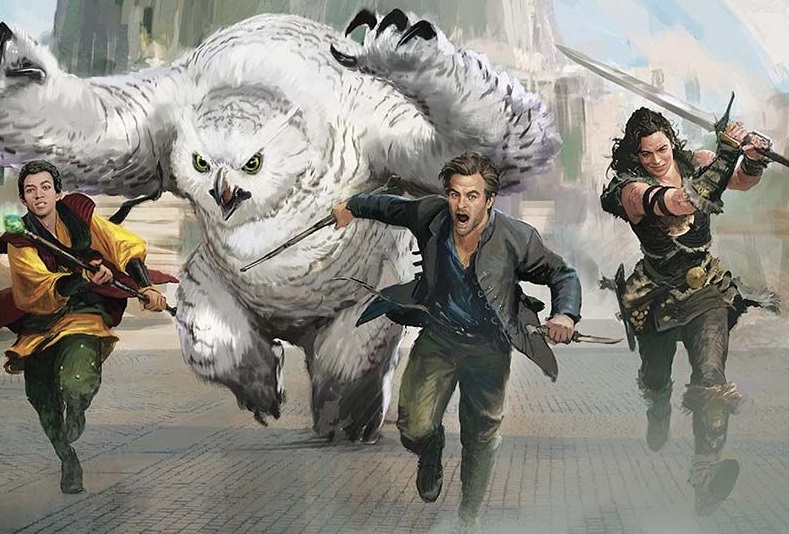
Adventures and misadventures follow as they gather old allies (a fumbling sorcerer and a misanthropic redhead druidess) get captured, escape, plot a heist, question corpses from old battles, seek aid from a stiffnecked paladin, descend to the Underdark, get pursued by undead assassins, find a magic helmet, portal across collapsing bridges, nearly get crushed by a chubby dragon rolling on them, suffer drowning, cave-in, set-backs, self-doubts. The sorcerer literally get kicked on his backside myriad times while failing to overpower a haunted helmet.
Then they attempt the heist on the fabulous treasure of Neverwinter, which is ironic, because none of them actually need or want the treasure: each is involved for nobler motives, to recover a kidnapped daughter or overthrow a tyrant. Of course they end up in the maze of the gladiators, pursued by Gary Gygax beasties.
Then there is an arm-wrestling duel as necromanceress and sorcerer summon up Bigby’s Grasping Hand to grasp at each other. I confess I have always been a fan of Bigby’s Grasping Hand. It is pure Gary Gygax magic-user cheese-whizz at its finest.
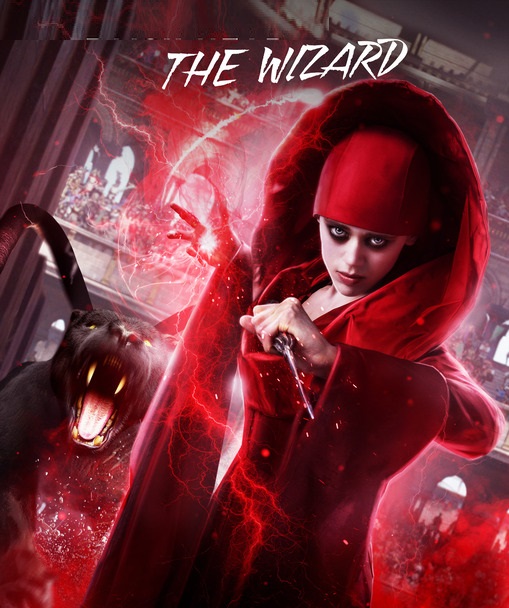
The final confrontation with the necromanceress ends in utter defeat, except that, once again, the harper had a cunning plan — and, once again, the plan was actually cunning, using elements the writer put on stage. The set up and follow through of this and every plot twist was perfectly executed.
The cleverest bit of business was the use of a magic walking stick, which allows for a limited form of teleportation, which they use to great advantage to break into the unbreakable vault. But time and again, they are outsmarted or overmatched, and our resourceful harper must then fall back on Plan B, which also fails, but then Plan C is revived, which is actually Plan A, which also fails, leaving them with Plan D.
The male characters are all likeable, especially Forge the trickster, played to oily perfection by Hugh Grant. They are unfortunately all effete males, except for the paladin, who is (I say with a sense of relief) played up exactly as a D&D paladin should be, humorless and literal, idealistic to a fault, unconquerable with his magic sword, lawful and good. And the rogue finds him insufferable, just as he should. By the laws of Wokeness, a good and heroic man must be a non-white. So it is here.
Wokeness rears its head again with the characters of the sorcerer and the druidess. He is a negro elf, and she a ginger abandoned by her human parents and raised by elfs — he once wooed her, but failed due to “lack of self esteem” and she neither remembers him nor his wooing, and so she undermines and emasculates him at every turn. His self-doubt is played for laughs. There is no trace of masculinity in the character, toxic or otherwise.
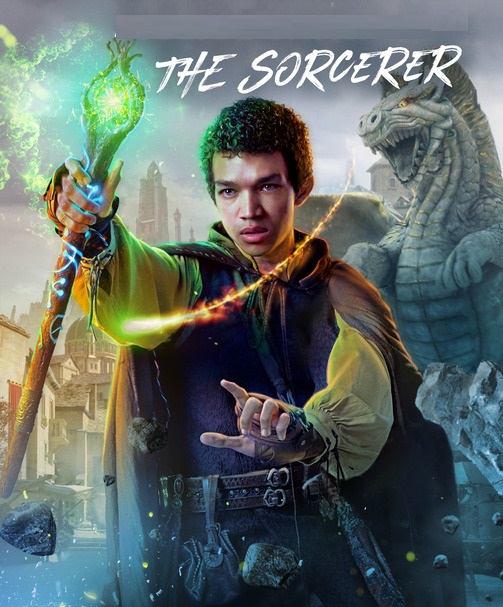
But, again, in the same whiplash from Wokeland to Elfland and back again seen before, the sorcerer confronts his famous ancestor in a vision, gains confidence, and declares his own self-worth, complete with a punch in the kisser for the ancestor. Perfectly good scene. Boy becomes man. Good.
(Well, mostly good. Almost good. We cannot imagine Aragorn punching Isildur of Numenor in the face to overcome his self-doubt about being king. We cannot imagine Aragorn suffering self-doubt. Peter Jackson can, but we cannot.)
In any case, as with all romance in this film, it is not very romantic.
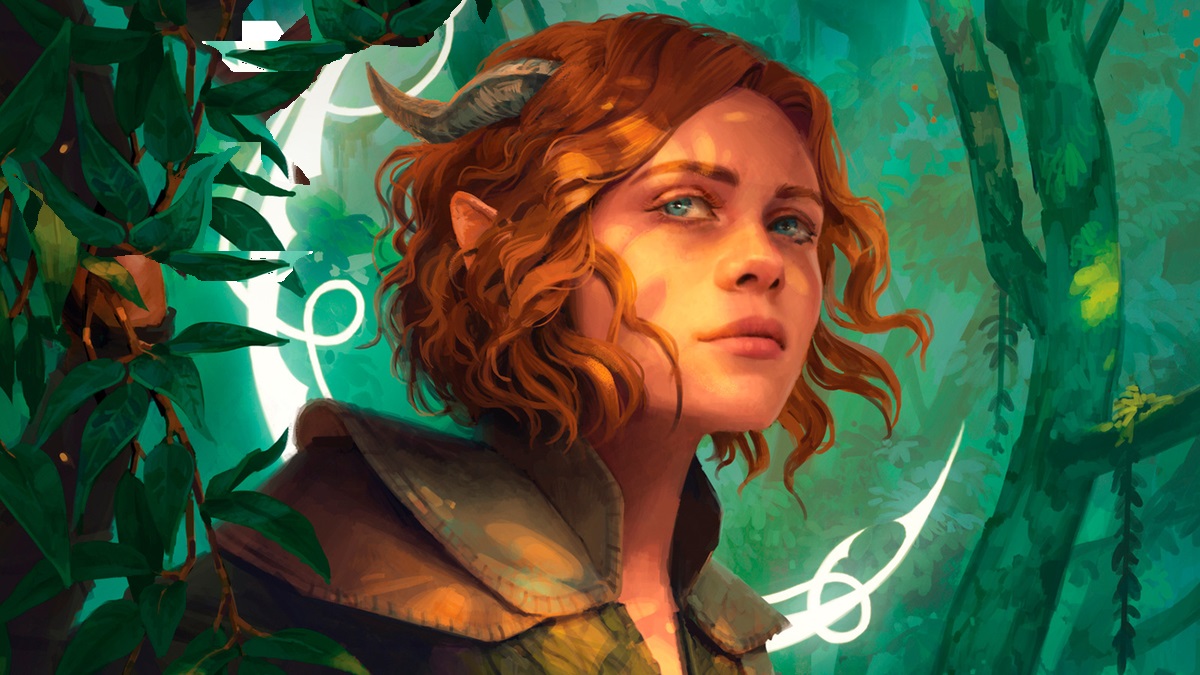
The film is visually splendid. The costumes, settings and scenery are convincingly set in the generic Hyborian Age flavored faux-medieval land of D&D. The shots of castles and towns, elfish treehouses, inescapable towers, old battlefields, carts and ships and buried dungeons, all could have been taken from cover paintings of Dungeon magazine. The highest compliment I can pay is that the scenery was so natural to its environs, that it was unnoticeable.
The Dungeons and Dragons background is honored by more than just a token reference to the inventions of Gary Gygax: his absurd monsters, from owl bears to displacer beasts to gelatinous cubes are given abundant screen time; the moon just as it should be in the Forgotten Realms, complete with the asteroid cloud called the Tears of Selune. There is even a momentary glimpse of the adventure team from the 1983 Dungeons and Dragons cartoon running by in the background.
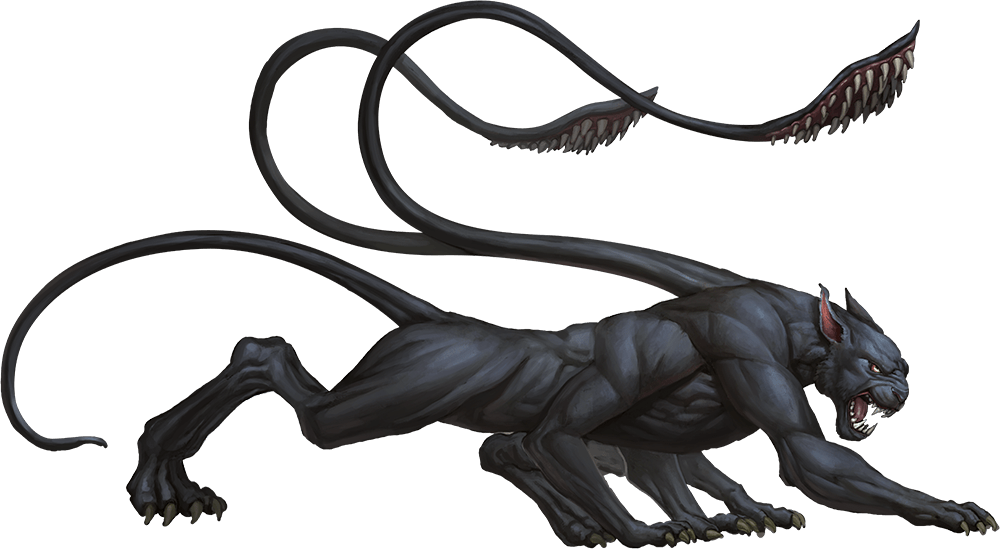
More to the point, the contrivance of the action, gathering a party of various professions, races, and both sexes to spelunk a dungeon or arrange a heist, is perfectly in keeping with the mood and flavor of a Dungeons and Dragons campaign. Only the most nitpicking of purists will have any complaint about the portrayal of the game-world: this film, unlike prior attempts in this peculiar subgenre, remained faithful to the source material.
The actresses were unmemorable. Non were attractive to the eye, nor were any given any emotions to express, and certainly not feminine emotions. Both the barbarianess and the druidess are stoical and cold.
The only scene which should have held emotion, one where the barbarianess goes to confront the husband who abandoned her when she was imprisoned, is played for laughs. He is a halfling, and spends his days cooking and cleaning and keeping house while she is out adventuring. This scene was simply an unnecessary insult to normal male and female ideals, but it could have been a good and moving scene.
Despite the handicap of wokeness, the writer managed to make the halfling have a personality — his reason for the divorce is that She-Conan drinks too heavily, takes suicidal risks on adventures, for she still regrets being expelled from her tribe, who ostracized her for marrying an outsider. The man for whom her tribe rejected her, rejected her because she could not overcome her grief over being rejected by her tribe. This is actually a heartbreaking plot point, but wokeness prevented it from being treated seriously. Meanwhile, the halfling has changed the curtains on their little cottage, and married a giantess even taller than the barbarianess.
But on the whole the film was credibly well acted, and deals with the perennial problem of how to portray magic in a fantasy world quite well and quite cleverly. More than once I applauded the sheer cunning of the characters: and I said aloud, “This is what a clever player character would do with such and such a magic item, and surprise the moderator when he did it.” What was well done was very well done.
The action sequence is very well done when the shape-changing druidess, disguised as a dragonfly, sneaks through a chink into the well- guarded and magically warded vault, the object of their heist, only to be discovered by the necromanceress. In one continuous shot, the camera follows the fleeing druidess in narrow escapes, as she morphs from mouse to woman to bird to beast, while the whole castle is roused in hot pursuit: it was frankly one of the best chase scenes I have seen in twenty years.
It was cleverly photographed, cleverly choreographed, and character made clever use of her magical powers, which could by no means solve every problem.
Indeed, the film also includes a scene where the self-doubting sorcerer angrily denounces the idea that magic can solve every problem — there are always limitations and prices. Which is as it should be.
But of course, ironically, one moment later the problem being discussed is one he knows how to solve, with a magic spell to speak with the dead. The following graveyard scene shows precisely what the limitations of that solution are, especially if one is not careful with the questions. Which is also as it should be.
Again, the writing in the graveyard scene was top notch, and the humor ranges from morbid to witty to ironic to sheer slapstick, all while keeping the plot humming along at a proper clip. And this by no means was the sole scene firing on all cylinders. Indeed, I would say that all the scenes not derailed by wokeness were as well written.
The writing was strong in other areas as well. The worldbuilding of setting a film in a world unlike our own, taken from an established background with a large body of already-existing fans, is no light task. For example, the dragons are so rare and powerful, they are named by name when they appear — which, if I may say again, is just as it should be. All the names and place names were perfect, coming directly from the source material.
But a film cannot follow source material from another medium slavishly, nor should it. For example, the Jack Vance magic system of memorized spells that then cannot be recast is never mentioned. On the other hand, in the newer rules, sorcerers do not suffer this limitation. I would say the film threaded the needle of honoring the original without being chained by it very nicely — indeed, as well as I can imagine it being done.
The world, in other words, was treated as being, by turns, fun, dangerous, exciting, mysterious, and horrific, a place of wonder and terror, and, yes, of dungeons and of dragons, but the world was never treated disrespectfully. No tongue-in-cheek irony here. No one winks at the camera.
However, it could not adhere to the traditions of sword and sorcery, due to the draconian rules of modern postmodernism, as said above. I do not wish to be unfair: the is one and only one scene where a maiden is rescued. By another maiden. So there.
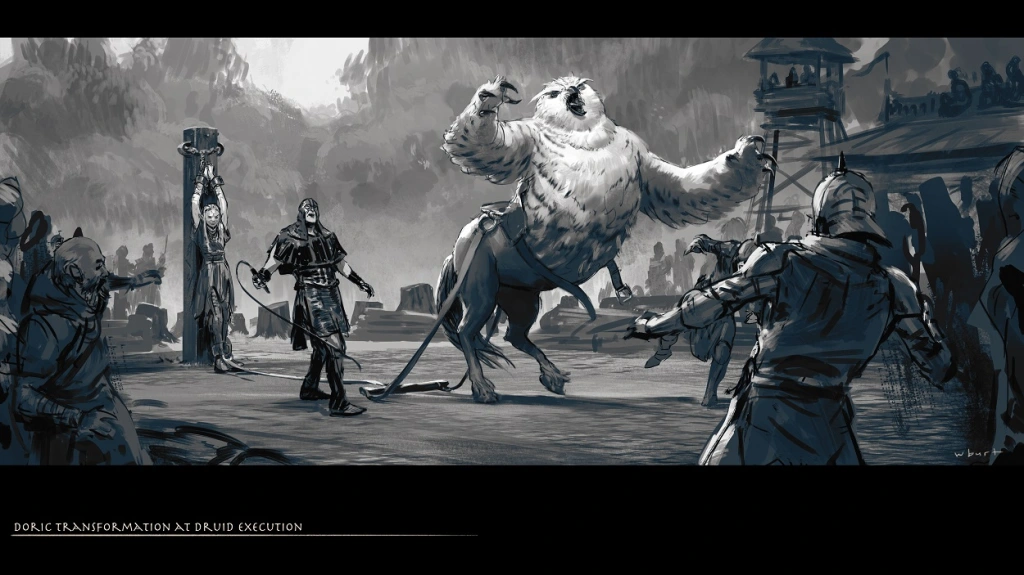
The ending nearly ruined the film, unfortunately. Wokeness, as it was in the first scene, domineered the last.
Widower does not resurrect dead wife, daughter never meets mother, family is not reunited; and at the same time, the nanny who raised the child is never married to the father, nor is their romance ever ignited, but they live as brother and sister, more chaste than monk and nun. Since they are both white, they may not meet and mate.
The ending nearly ruined the film, but not quite. Since She-Conan was portrayed as unappealing throughout, and the harper never betrays the least crumb of interest in her, the disappointment that no family can be formed was not absolute.
But the idea of making a tale of exotic climes and magical adventures without hero to kiss heroine at the end, where no damsel needs saving, falls flat. It falls flat and then digs deep hole when the hero betrays saving his wife to save his female comrade. So teammates are more important than mate mates? This is wrongheaded to the point of nausea.
The wife, in a dream from beyond the grave, does tell Ed the Harper to end his mourning and release her to his next life, and the paladin says the same, so this move was not without proper set-up in the plot.
Nonetheless, it is a cheat to have an adventure film where Indiana Jones never kisses Marion Ravenwood, and Princess Leia never tells Han Solo she loves him. It is a cheat.
Still, I must admit that this wokeness is the sole flaw I find. Otherwise it is better than good. It is a masterpiece.
The film was true to the source material, which is rare enough these days: there is even a shot of a scene change the shows the map of the Forgotten realms slide by. Fans of Gygax appreciate such homages and grace notes.
If you do not mind wokeness, I strongly recommend the film. If you do, I do strongly do not.
